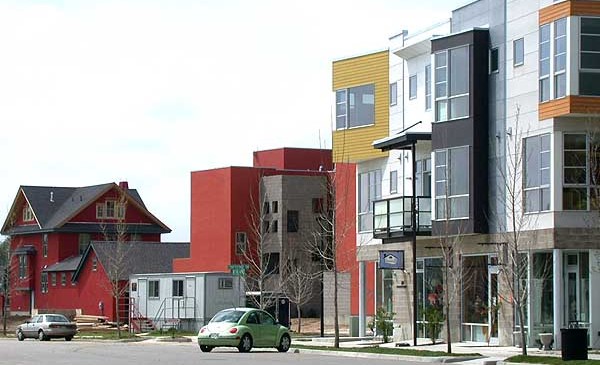Planning Commission to take a closer look at neighborhood infill tools
Friday, August 14, 2015 by
Jack Craver Most members of the Planning Commission appear to believe that something should change about city infill tools attached to neighborhood plans, but none appear certain about what specifically should change.
After a half-hour discussion with city staff about how neighborhoods dealing with unwanted infill tools could remove them from their neighborhood plans and how the city might be able to alter the use of infill tools in general, the commission voted unanimously Tuesday to pass the discussion on to the their Neighborhood Planning Subcommittee, which will address the issue at its meeting next month.
At issue are the eight infill tools that many neighborhoods have accepted as part of their neighborhood plans over the past 15 years. The tools provide exceptions to base zoning regulations as a way to fill unused parcels. In recent years, a number of neighborhood activists have complained that infill tools are being used to allow development that is out of place or goes against the goals of the neighborhood plan.
Clearly, suggested Commissioner Nuria Zaragoza, some neighborhoods wish they hadn’t given the city so many tools to approve developments.
“Now that they’re seeing them in action, they’re realizing that that wasn’t the desired outcome when they opted in for either the whole area or subdistricts,” she said.
A prime example of the conflict was on display last month, when Susana Almanza, president of the Montopolis Neighborhood Association, came to a Planning Commission meeting to protest the construction of a 12-home subdivision on Montopolis Road. Almanza, who criticized the project as part of a broader gentrification effort in the area, argued that the proposed housing was too dense to qualify for the SF-3 zoning assigned to the lot. The commission, however, was obligated to support the project because it complied with a “cottage use” provision attached to the Montopolis Neighborhood Plan.
“At this point, our hands end up tied,” Commissioner James Shieh told Almanza at the time. “I would seriously recommend you re-look at your neighborhood plan, and if you don’t like it, maybe repeal it.”
But the process by which a neighborhood might seek to remove infill tools from its plan is not short or easy. The neighborhood plan contact team would have to initiate a plan amendment, but that would have to be coupled with action by Council or the Planning Commission to initiate a zoning case.
Just the process of amending the neighborhood plans would likely take six to nine months, suggested Mark Walters, a principal planner in the Planning and Zoning Department.
“Each one of these could end up being fairly controversial,” explained Walters. In addition, he said, the city generally prioritizes helping those in unplanned areas develop neighborhood plans over assisting groups that are seeking to update existing ones. Again and again, he and commissioners emphasized the limitations of an overburdened city staff.
Further complicating matters is the ongoing CodeNEXT initiative to revamp the city’s Land Development Code, which Walters suggested might be the best venue for addressing the neighborhood planning process.
“I think it would be better to address these issues in a more holistic fashion in a comprehensive way through a code rewrite, rather than to one-off them and then try to pigeon-hole them into a new code that may have a different regulatory philosophy,” he said.
But a number of commissioners suggested that starting a conversation about the use of infill tools could guide the development of CodeNEXT. Zaragoza proposed having a subcommittee examine the problems involving the infill tools so that it could propose solutions to the team in charge of CodeNEXT. The solution may not necessarily be removing the tools from neighborhood plans, but changing the rules to prevent their abuse.
“We have such great information in how (infill tools) worked here in Austin and how it was received that I think it would be of great value to put that information together and present it to that team,” she said.
“DSCN3187 prospectnewtown e 600“. Licensed under CC BY-SA 3.0 via Wikimedia Commons.
You're a community leader
And we’re honored you look to us for serious, in-depth news. You know a strong community needs local and dedicated watchdog reporting. We’re here for you and that won’t change. Now will you take the powerful next step and support our nonprofit news organization?











